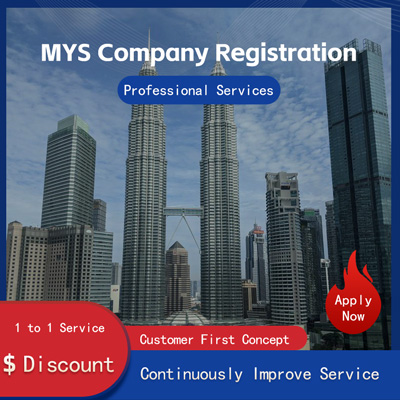
Bottlenecks in China's Cross-border E-commerce
The bottlenecks of China's import cross-border e-commerce and export
Cross-border e-commerce has become an increasingly important part of the global trade landscape, particularly for China, which is both one of the largest importers and exporters in the world. This industry has experienced rapid growth over the past decade, driven by technological advancements, consumer demand for diverse products, and the increasing ease of international transactions. However, despite its significant progress, cross-border e-commerce still faces several challenges that hinder its full potential.

One of the primary bottlenecks in cross-border e-commerce is logistics. The complexity of international shipping presents numerous obstacles, including long transit times, high transportation costs, and the need for compliance with various customs regulations. For instance, according to a recent report by DHL Express, the average delivery time for cross-border parcels can vary significantly depending on the destination country, with some regions experiencing delays of up to two weeks. These delays not only frustrate consumers but also impact the efficiency of businesses operating in this sector. Additionally, the cost of shipping internationally remains high, often eating into profit margins for small and medium-sized enterprises SMEs that make up a significant portion of the cross-border e-commerce market.
Another critical challenge is the regulatory environment. Each country has its own set of rules and requirements regarding the import and export of goods, which can be difficult for businesses to navigate. For example, the European Union has stringent product safety standards that must be adhered to before goods can be sold within its borders. Similarly, the United States imposes strict labeling and documentation requirements for imported products. These regulations require companies to invest in compliance processes, which can be both time-consuming and costly. Furthermore, changes in trade policies, such as tariffs or sanctions, can create uncertainty and disrupt supply chains, making it difficult for businesses to plan effectively.
Payment processing is another bottleneck in cross-border e-commerce. Consumers and businesses face difficulties when dealing with foreign currencies and payment systems. Conversion rates can fluctuate, leading to unexpected costs, and certain payment methods may not be widely accepted in all countries. For example, while credit cards are ubiquitous in North America and Europe, many consumers in Asia prefer digital wallets like Alipay or WeChat Pay. This diversity in payment preferences necessitates that businesses offer multiple options to cater to their global customer base, adding complexity to their operations.
Moreover, cultural differences pose a significant challenge for cross-border e-commerce. Understanding local customs, consumer behavior, and marketing preferences is crucial for success in different markets. What works well in one country may not resonate with customers in another. For instance, a product that sells well in urban areas of China might not appeal to rural consumers due to differences in lifestyle and purchasing habits. Companies must invest in market research and localization strategies to tailor their offerings to specific regions, which requires additional resources and expertise.
Despite these challenges, the future of cross-border e-commerce looks promising. Technological innovations, such as blockchain and artificial intelligence, are beginning to address some of the logistical and regulatory hurdles. Blockchain technology can enhance transparency and traceability in supply chains, reducing the risk of counterfeit goods and improving efficiency. AI-driven tools can help businesses predict consumer trends and optimize inventory management, allowing them to respond more quickly to market demands. Furthermore, the rise of free trade agreements and regional economic partnerships is helping to reduce barriers to trade, making it easier for companies to operate across borders.
In conclusion, while China’s import cross-border e-commerce and export industries have made remarkable strides, they continue to face several bottlenecks. Logistics, regulation, payment processing, and cultural differences are among the most significant challenges. However, with ongoing technological advancements and efforts to streamline global trade practices, these obstacles can be overcome. As the industry evolves, it will likely play an even more vital role in connecting markets and fostering economic growth worldwide.
Still have questions after reading? More than 98,000 users have contacted us. Please fill in the following information to obtain business information.

Service Scope
MoreRecommended for You
- Cross-Border E-commerce Listing Guide A Detailed Explanation of Its Definition and Development Prospects
- Ebay Advertising Optimization Tips
- Analysis of eMAG Promotion Advertising Strategy
- Strategies to Improve eMAG Product Image Click-Through Rate
- How to Reduce Bounce Rate on Independent Sites Useful Tips Sharing
- Wayfair Customer Service Communication Tool
- Tariff for Large Item Logistics Delivery
- Shopee Product Upload Frequently Fails How to Fix
- How Newegg Improves Logistics Service Satisfaction
- Wayfair Traffic Guidance Essentials
- Shein Returns Which Categories Support Returns and Exchanges? Detailed Return Process
- How L'Oréal Sets Promotion Objectives Balancing Sales Growth and Brand Promotion
- Infringement Complaint Response Strategies and Complaint Process When Temu Store Images Are Sued
- Which Shopee New Stores Are Best to Open? How Many Shopee Stores Can Be Created?
- How to Quickly Get Your Shopify Store Indexed by Google? And Analysis of Shopify Website Building Process.
- Key Strategies to Optimize Kaufland Product Logistics Distribution Efficiency
- How to Use the EMS Service on AliExpress
- TikTok Store Setup Costs and Operation Guide
- Kaufland's Strategy to Enhance Store Recommendation Appeal
- TikTok Shop Individual Seller Onboarding Guide Understand the Application Process and Requirements


 ONE
ONE








Customer Reviews
Small *** Table
December 12, 2024The experience was very good. I was still struggling to compare it with other companies. I went to the site a few days ago and wanted to implement it as soon as possible. I didn't expect that everything exceeded my expectations. The company is very large, with several hundred square meters. The employees are also dedicated and responsible. There is also a wall of certificates. I placed an order on the spot. It turned out that I did not make a wrong choice. The company's service attitude is very good and professional. The person who contacted me explained various things in detail in advance. After placing the order, the follow-up was also very timely, and they took the initiative to report the progress to me. In short, I am very satisfied and recommend this company!
Lin *** e
December 18, 2024When I first consulted customer service, they recommended an agent to me. They were very professional and patient and provided excellent service. They answered my questions as they came in. This 2-to-1 service model is very thoughtful. I had a lot of questions that I didn’t understand, and it’s not easy to register a company in Hong Kong. Fortunately, I have you.
t *** 7
December 19, 2024I originally thought that they only did mainland business, but I didn’t expect that they had been doing Hong Kong business and were doing very well. After the on-site interview, I decided to ask them to arrange the registration of my Hong Kong company. They helped me complete it very quickly and provided all the necessary information. The efficiency was awesome. It turns out that professional things should be done by professionals.👍
b *** 5
December 16, 2024In order to register a company in Hong Kong, I compared many platforms and stores and finally chose this store. The merchant said that they have been operating offline for more than 10 years and are indeed an old team of corporate services. The efficiency is first-class, and the customer service is also very professional.